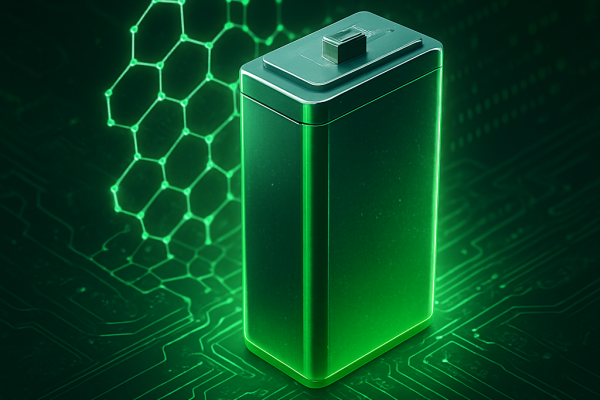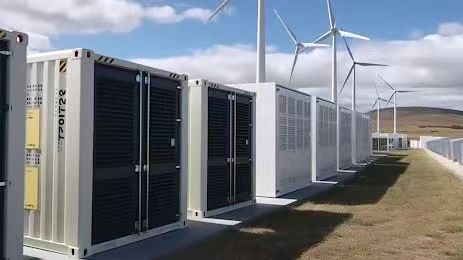Small-scale Photovoltaic (PV) + Storage systems are rapidly becoming a key solution for residential, small commercial, and off-grid applications, providing users with reliable, sustainable, and cost-efficient energy. These systems integrate solar PV generation with battery storage, allowing users to store excess energy produced during the day for use at night or during grid outages. However, despite their increasing popularity, ensuring the technical reliability of these systems is crucial for their successful long-term operation.
This article dives into the key reliability considerations for small PV storage systems, providing replicable technical insights, real-world case studies, and best practices for ensuring optimal performance, safety, and durability over time.
1. Understanding Small PV + Storage Systems
Small PV + storage systems are typically composed of:
- PV panels (typically 2–10 kW for residential and small commercial systems)
- Battery storage (Li-ion or lead-acid batteries, ranging from 5–20 kWh)
- Inverters (either hybrid inverters or separate charge controllers and inverters)
- Energy Management System (EMS) (to monitor and control power flow)
The system’s core function is to capture energy from the PV panels during daylight hours, store excess energy in batteries, and manage power usage based on energy demand. Small PV + storage systems are often used to:
- Reduce electricity costs
- Provide backup power during grid outages
- Increase energy independence and reduce reliance on the grid
While these systems provide many benefits, their technical reliability is paramount to ensuring they consistently deliver value to the user over their operational lifespan (typically 10–20 years).
2. Key Reliability Considerations for Small PV Storage Systems
The reliability of small PV storage systems depends on several factors, including the performance of the individual components, system integration, and maintenance practices. Let’s break down the key areas that impact the long-term reliability of these systems:
a) Battery Life and Management
Batteries are the most crucial component for determining the longevity and reliability of a small PV + storage system. The main factors influencing battery life include:
- Cycle life: The number of charge-discharge cycles the battery can undergo before its capacity degrades.
- Depth of Discharge (DoD): The extent to which the battery is discharged during each cycle. A shallow DoD (discharging only a portion of the battery’s capacity) helps prolong battery life.
- Temperature control: Batteries, particularly lithium-ion batteries, are sensitive to high temperatures. Systems with active thermal management (e.g., cooling fans or passive heat dissipation systems) improve battery lifespan.
- Battery chemistry: Lithium-ion batteries are more efficient and have a longer lifespan than traditional lead-acid batteries, but they require more sophisticated battery management systems (BMS).
Best Practices:
- Ensure the battery is not regularly discharged to 100% or charged to 0%.
- Use batteries with a high cycle life (e.g., >3,000 cycles at 80% DoD for lithium-ion).
- Use temperature sensors or active thermal management to maintain optimal operating conditions.
b) Inverter and Power Conversion Reliability
The inverter is another critical component in small PV storage systems. It converts DC power from the solar panels and batteries into AC power for use in the building or grid. The reliability of the inverter impacts system performance and overall energy yield.
Factors to consider include:
- Efficiency: High-quality inverters with efficiency ratings of 95% or higher ensure minimal energy loss during conversion.
- Overload protection: Inverters should have built-in protections against overloads or short circuits, ensuring reliable operation under varying load conditions.
- Cooling mechanisms: Like batteries, inverters generate heat. Systems with active cooling (e.g., fans) or passive cooling (e.g., heat sinks) are less likely to fail due to overheating.
- Integrated features: Hybrid inverters with integrated charge controllers offer a simpler system design and reduce the number of components that can fail.
Best Practices:
- Select high-efficiency inverters (≥ 95%) from trusted manufacturers.
- Ensure inverters are equipped with overload protection and active cooling to enhance longevity.
- Periodically check for firmware or software updates to ensure the inverter is operating optimally.
c) System Integration and Energy Management
The system design and integration of PV, storage, and inverter components can have a significant impact on reliability. Proper system integration ensures that components work together harmoniously and optimally.
Considerations for system integration include:
- Proper sizing: Ensure the battery is appropriately sized for the PV system and daily energy consumption to prevent undercharging or overcharging.
- Energy Management System (EMS): An EMS monitors and optimizes energy flow, ensuring batteries charge when solar energy is abundant and discharge when needed most. A well-designed EMS can prevent overcycling, maximize battery life, and improve system efficiency.
- Safety protocols: Fault detection mechanisms such as ground-fault protection and arc-fault circuit interrupters (AFCIs) help ensure the safety and reliability of the system.
Best Practices:
- Work with experienced engineers or system integrators to design a properly sized and well-balanced system.
- Use smart EMS to optimize battery charging cycles and prevent excessive wear.
- Regularly perform safety checks on circuit breakers, fuses, and protective devices.
3. Case Study: Ensuring Reliability in a Residential PV + Storage System
Background
A residential PV + storage system was installed for a family in a remote location, where grid access was unreliable, and power outages were frequent. The system included a 5 kW solar array, a 10 kWh lithium-ion battery, and a 5 kW hybrid inverter. The main goal was to ensure reliable backup power during grid outages and optimize energy use during the day.
The Challenge
- Occasional power surges from the grid caused stress on the system’s components.
- The system needed to function reliably for 15+ years with minimal maintenance.
- Managing the battery’s depth of discharge was critical to avoid premature aging of the lithium-ion battery.
The Solution
The system was designed with the following features to ensure reliability:
- Battery management system (BMS) to actively monitor and control DoD and temperature.
- Hybrid inverter with integrated overload protection and active cooling.
- The EMS was set to limit battery discharge to 80% capacity to optimize lifespan.
Results
- System uptime: The system provided uninterrupted power during grid outages (even lasting for 48+ hours of backup).
- Battery life: The battery showed minimal degradation after two years of use, with a 90%+ capacity retention.
- Efficiency: The system achieved 95% efficiency, with minimal losses in energy conversion.
4. Best Practices for Ensuring Long-Term Reliability
- Monitor system performance regularly: Use an EMS or IoT-enabled platform to track performance, energy production, and storage levels in real-time.
- Perform preventive maintenance: Regularly inspect batteries for signs of aging (e.g., swelling, overheating) and check inverters for proper cooling.
- Optimize energy consumption patterns: Ensure that energy demand is managed to avoid overusing the system’s capacity, especially during peak times.
- Maintain warranty and service contracts: Choose reliable vendors that offer long-term support and warranties, particularly for battery and inverter components.
Small PV + storage systems offer a reliable, cost-effective solution for energy independence, but their technical reliability depends on the proper selection, integration, and management of system components. By paying attention to battery management, inverter performance, system integration, and energy management, users can maximize the lifespan, efficiency, and reliability of their systems.
For EPCs, system integrators, and energy managers, these technical insights serve as a guide to building resilient, long-lasting systems that provide optimal performance and value for end users.









